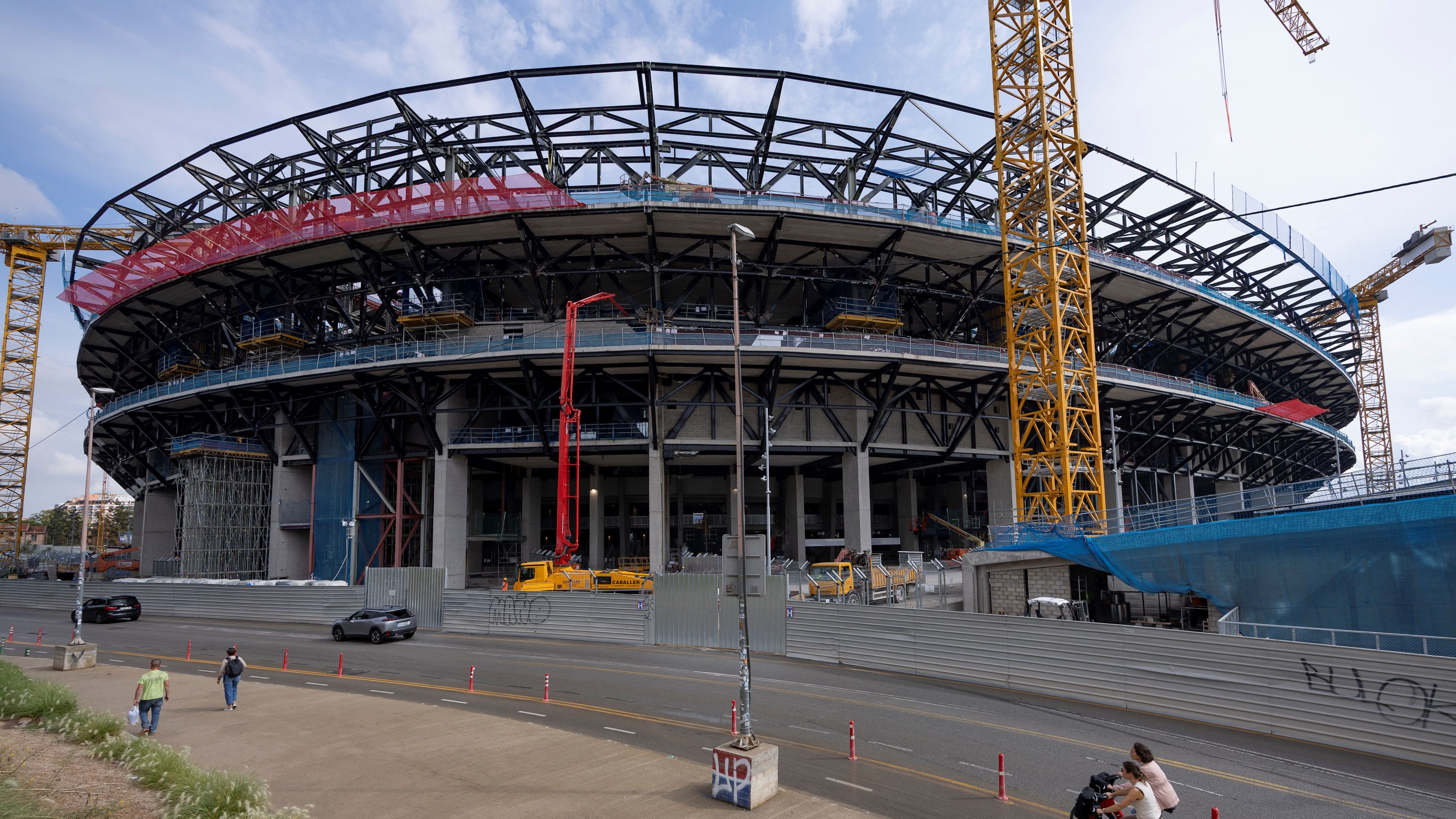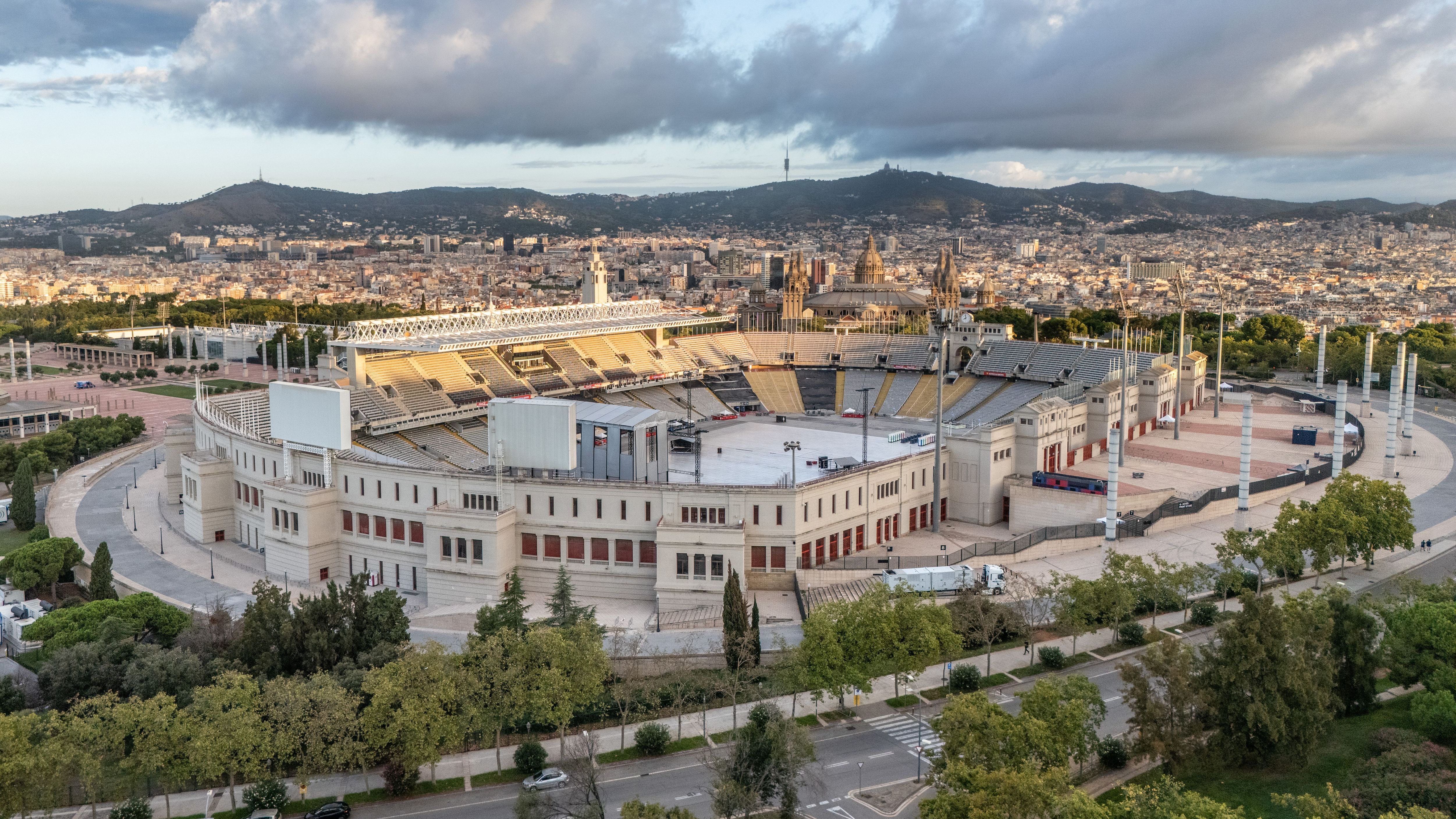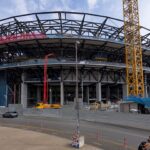


Barcelona’s Camp Nou Comeback: A Strategic Leap Forward
In a pivotal moment for the club, Barcelona has finally secured approval to welcome fans back to the revamped Camp Nou, marking a significant milestone in the expansive Espai Barca initiative. This development highlights the balance between fiscal prudence and emotional ties, as leaders prioritize long-term gains over immediate sentiment.
Delaying the Return to Camp Nou for Smarter Financial Gains
Despite gaining the Phase 1A permit that permits up to 27,000 attendees at the updated venue, Barcelona’s management has chosen to continue using the Montjuic’s Lluis Companys Stadium temporarily. This choice stems from a focus on economic benefits, as the larger crowds at Montjuic currently boost earnings from games more effectively than a partially active Camp Nou would.
Balancing Fan Sentiments and Long-Term Stability
Many fans have expressed frustration over the prolonged absence from their traditional home, yet officials argue that this wait will foster superior financial and competitive security down the line. The extra time also facilitates thorough inspections and validations of the renovated sections, meeting the rigorous safety criteria set by local and continental regulators.
The Vision of Espai Barca: A Bold Infrastructure Overhaul
This decision aligns with the ongoing Espai Barca project, recognized as one of Europe’s most daring stadium and facility upgrades in soccer. The plan includes expanding to accommodate 47,000 spectators in Phase 1B, which would secure UEFA’s nod for high-profile Champions League fixtures at the transformed site.
Timing the Grand Reopening
Vice President Elena Fort proposes aligning the full return with the club’s 126th anniversary in late November, describing it as the perfect occasion to celebrate this historic shift and reconnect with supporters.
Club Leaders Reflect on the Need for Modernization
During a recent General Assembly, Treasurer Olive openly admitted that Barcelona delayed updating their legendary stadium for too long, stating, “We ought to have constructed this facility earlier; we’re behind schedule. We’re pursuing this to match the top teams globally. For 2024-25, we’re seeing €175 million ($204m) in stadium income, and without changes, we’d hit €250m ($291m) at Camp Nou, yet with the new setup, we could soar to €400m ($466m).”
Echoes of Ambition from the Top
These comments resonate with President Laporta’s views, who portrays the rebranded Spotify Camp Nou as a beacon of solidarity and forward-thinking drive. He noted, “Spotify Camp Nou represents the shared aspiration of Barcelona enthusiasts and a heritage for those to come. We’ve shown resolve in reviving this stalled endeavor. Our members deserve to witness and experience this vision. We’ve diligently secured the necessary approvals from the city council, and I offer sincere commendations on this achievement.”
Beyond Finances: Preserving Identity
Both Olive and Laporta stress that Espai Barca transcends mere construction and profits; it’s a declaration of the club’s core values. The upgraded stadium aims to enhance financial competition with Europe’s leading clubs while safeguarding FC Barcelona’s spirit at its original location.
Scrutiny Surrounding the Espai Barca Project
Valued at approximately €1 billion ($1.17bn), this initiative has faced intense examination in Barcelona’s recent narrative. The construction deal was awarded to the Turkish company Limak, even though it ranked lowest in technical assessments against Spanish firms like Ferrovial and FCC. Limak’s bid required a substantial initial payment of about €200m ($233m), far exceeding the €12m ($14m) from rivals, sparking debates on openness and future funding.
Defending the Choice for Timely Completion
Officials have justified the selection, claiming Limak’s approach was best suited to meet the timelines mandated by UEFA and local authorities.
Transforming Spotify Camp Nou into a Year-Round Hub
The ultimate aim is to evolve Spotify Camp Nou into a cutting-edge venue for football and events, delivering steady income throughout the year. This will stand as the centerpiece of the Espai Barca network, incorporating a fresh Palau Blaugrana arena and enhanced training areas.
Boosting Commercial Alliances
Separately, Barcelona has fortified its business strategy via a prolonged alliance with Spotify. The updated pact maintains Spotify as the main sponsor through 2030 and prolongs stadium naming rights until 2034, providing reliable revenue during renovations. This partnership is celebrated as an ideal blend of sports and international entertainment.
Looking Ahead: Securing Phase 1B and Financial Rebound
With Phase 1A in place, the focus shifts to obtaining Phase 1B approval, enabling 47,000 fans at matches. Vice President Elena Fort is confident, noting that it’s mostly paperwork, with the physical work already done.
Potential for a Historic Return
Approval could lead to a high-profile game near the November milestone. Moving forward, the club anticipates a surge in stadium earnings from €175m to up to €400m per year once fully active, potentially revolutionizing Barcelona’s recovery from past economic challenges and league restrictions.
The Admission from Barcelona’s Treasurer
Barcelona’s treasurer has openly acknowledged that the club should have embarked on rebuilding Camp Nou several years ago, a revelation that underscores the ongoing challenges and opportunities in modernizing one of football’s most iconic stadiums. This candid admission highlights how delays in stadium renovation can impact a club’s financial health, fan experience, and competitive edge in the global sports market. For clubs like Barcelona, investing in Camp Nou renovation isn’t just about aesthetics; it’s a strategic move to boost revenue streams, enhance sustainability, and keep pace with evolving fan expectations.
Why Renovation is Strategically Important
Renovating Camp Nou has become a pressing issue for Barcelona, as the treasurer’s statement points to missed opportunities in adapting the stadium to contemporary demands. Keywords like “Camp Nou renovation strategies” reveal that stadium upgrades can directly influence a club’s ability to host larger events, integrate advanced technology, and generate additional income. For instance, rebuilding could increase the stadium’s capacity from around 99,000 seats to potentially over 105,000, allowing for more high-profile matches and concerts that drive “Barcelona stadium revenue growth.”
This strategic importance extends beyond mere size. A modernized Camp Nou would incorporate eco-friendly features, such as solar panels and efficient waste management systems, aligning with global trends in sustainable sports infrastructure. The treasurer emphasized that earlier action could have prevented revenue losses from outdated facilities, which currently limit premium seating options and VIP experiences. In the competitive world of European football, where clubs like Real Madrid have already upgraded their venues, “strategic importance of stadium renovation” for Barcelona means securing long-term financial stability and fan loyalty.
Benefits of Stadium Renovation
When it comes to the advantages of renovating a historic venue like Camp Nou, the benefits are multifaceted and far-reaching. First, financial gains stand out: a rebuilt stadium could generate millions through enhanced corporate partnerships, luxury suites, and merchandising opportunities. Barcelona’s treasurer noted that postponing this work has cost the club in lost potential earnings, especially as other top-tier clubs have seen ticket sales soar post-renovation.
Another key benefit is improved fan engagement. Imagine attending a match with seamless Wi-Fi, interactive apps for real-time stats, and accessible seating for all fans-elements that a Camp Nou renovation could introduce. These upgrades not only enhance the match-day experience but also attract a younger, tech-savvy audience, ensuring the club’s relevance in the digital age. From a “Camp Nou upgrade benefits” perspective, such changes could reduce operational costs through energy-efficient designs, ultimately contributing to a more sustainable future for the club.
- Increased Revenue Potential: New hospitality areas and event spaces could host non-football events, diversifying income.
- Enhanced Safety and Accessibility: Modern renovations often include better crowd management and inclusive facilities, reducing risks and improving visitor satisfaction.
- Brand Elevation: A state-of-the-art stadium reinforces Barcelona’s global brand, making it a destination for tourists and sponsors alike.
Practical Tips for Sports Venue Upgrades
For clubs considering similar projects, drawing from Barcelona’s experience offers valuable lessons on executing a successful stadium renovation. Start by conducting thorough feasibility studies to assess costs, timelines, and potential disruptions-something Barcelona might have overlooked in the past. Engaging with fans early through surveys can help tailor designs to their preferences, ensuring the project gains community support.
Practical tips include prioritizing phased renovations to minimize downtime; for example, Barcelona could renovate sections incrementally to keep hosting games. Collaborating with experienced architects and engineers is crucial, as they can integrate innovative features like retractable roofs or multi-use zones. To optimize “stadium rebuild strategies,” clubs should explore funding options such as public-private partnerships or fan-backed investments, which could alleviate financial burdens.
- Budget Management: Allocate funds for unexpected delays, as construction projects often face overruns.
- Sustainability Focus: Incorporate green technologies to appeal to environmentally conscious stakeholders.
- Technology Integration: Use data analytics to design fan-friendly features, like personalized concessions and virtual reality tours.
Case Studies from Other Clubs
Looking at real-world examples, we can see how other football clubs have benefited from timely stadium renovations, providing a blueprint for Barcelona. Take Tottenham Hotspur in the Premier League, for instance. Their complete rebuild of Tottenham Hotspur Stadium transformed it into a multi-purpose venue, generating an extra £100 million annually through events like NFL games and concerts. This case illustrates the “strategic importance of renovation” in expanding revenue beyond traditional matches.
Similarly, Manchester United’s upgrades to Old Trafford focused on modernizing seating and adding retail spaces, which boosted fan satisfaction and commercial deals. These case studies show that acting decisively, as Barcelona’s treasurer now admits they should have, can lead to quicker returns on investment. In contrast, delays like those at Camp Nou have highlighted risks, such as losing out on hosting major tournaments.
First-Hand Experiences
Sharing insights from those involved in stadium projects adds a personal touch to understanding Camp Nou’s potential. Former players and club executives have recounted how outdated facilities affected team morale; for example, cramped locker rooms at older stadiums can hinder preparation for big games. One executive from a rival club shared that after their venue’s renovation, players reported feeling more energized by the atmosphere, directly linking it to performance improvements.
From a fan’s perspective, attending events at renovated stadiums like the Allianz Arena in Munich has been transformative, with features like panoramic views and app-based services making every visit memorable. Barcelona fans could expect similar “first-hand experiences with stadium upgrades,” fostering a deeper connection to the club and creating lasting memories. These stories underscore that, as the treasurer pointed out, rebuilding sooner could have elevated the overall Camp Nou experience for everyone involved.









